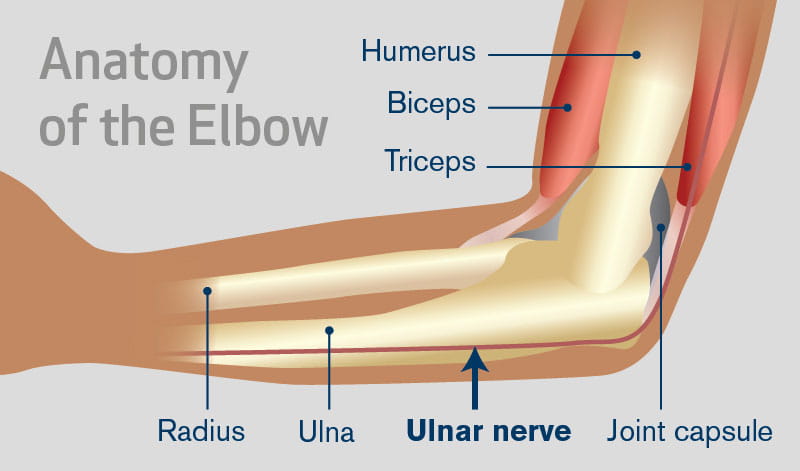Where Is the Funny Bone Located
WHEN SHOULD I WORRY ABOUT...
Why Does Hitting Your Funny Bone Hurt So Much?
Feb. 24, 2021
There are a few things about our bodies that, in one way or another, can be considered funny.
Hearing someone laugh can make you laugh. The comical sounds that sometimes come along with passing gas are funny. Someone being compelled to yawn after you yawn is sort of funny.
But what is basically never funny is your funny bone — despite the fact that we've decided to coin it as such. We've all experienced the tingling, jolting pain that comes with hitting your funny bone. It's a different sort of pain, to be sure, but not pain that any of us would consider funny.
And speaking of a different sort of pain, why does hitting your elbow "just hit so different?" Almost like your entire arm has been plunged into ice water and then electrocuted?
Funnily enough, getting to the bottom of this strange, unpleasant sensation ends up being easier to understand than trying to figure out why your funny bone is even called your funny bone in the first place.
Where is your funny bone?
Funny you should ask.
It turns out that your funny bone isn't a bone. It's actually a nerve — one that starts in your spine and travels from your neck, through your elbow and to your fingers (your pinky and ring fingers, to be exact). It's called the ulnar nerve. As one of the three primary nerves in your arm, the main role of your ulnar nerve is to provide sensation in these fingertips, as well as help the muscles in your hand coordinate fine movement and the muscles in your forearm control your grip.
Along its journey from your spine to your fingers, your ulnar nerve is pretty well protected by muscle, fat and bone. But there's one spot at your elbow where this nerve is unusually exposed, and that spot is called your funny bone.
At this point in your arm, your ulnar nerve passes through your cubital tunnel, which runs underneath the little bony bump (called the medial epicondyle) on the inside of the back of your elbow. Feel around, you can probably find it.

It's at this spot that your ulnar nerve is particularly vulnerable, especially when your elbow is and bent and the nerve is protected by only a small layer of skin.
Why does hitting your "funny bone" hurt different?
Now that you know your funny bone isn't actually a bone — it's a vulnerable portion of a major nerve running through your arm — it's probably a little easier to understand why hitting it in a certain way causes pain. When you hit your funny bone at just the right angle, you're essentially squashing it into your medial epicondyle bone. Ouch.
But why this pain hits so different is interesting, too.
All sensations of pain are mediated by nerves, but there's a difference between the perception of pain (nociceptive pain) and actual nerve pain.
When you stub your toe, slam your finger in a door or smack your head, irritation and damage to your tissue triggers the surrounding nerves to coordinate nociceptive pain. These nerves inform your brain you're in pain — cue those sharp or throbbing sensations. Moral of the story: Stop doing the thing you're doing, it's causing damage.
Nerve pain is a bit different. The pain is still coordinated by a nerve, but the irritation or damage is occurring directly to the nerve itself. In addition, the pain feels different — more electric, burning or stinging.
In the case of hitting your funny bone, squashing your ulnar nerve into your medial epicondyle bone is irritating. And you feel this nerve pain in the areas where your ulnar nerve provides sensation, resulting in an unpleasant, shocking sensation shooting down your forearm and into your fingers.
Fortunately, the pain that comes with hitting your funny bone is temporary. As soon as you shake things off, it's like nothing ever happened. No ice pack or bandaid needed.
Stay up-to-date
Please Enter Email
Please Enter Valid Email
Source: https://www.houstonmethodist.org/blog/articles/2021/feb/why-does-hitting-your-funny-bone-hurt-so-much/
0 Response to "Where Is the Funny Bone Located"
Post a Comment